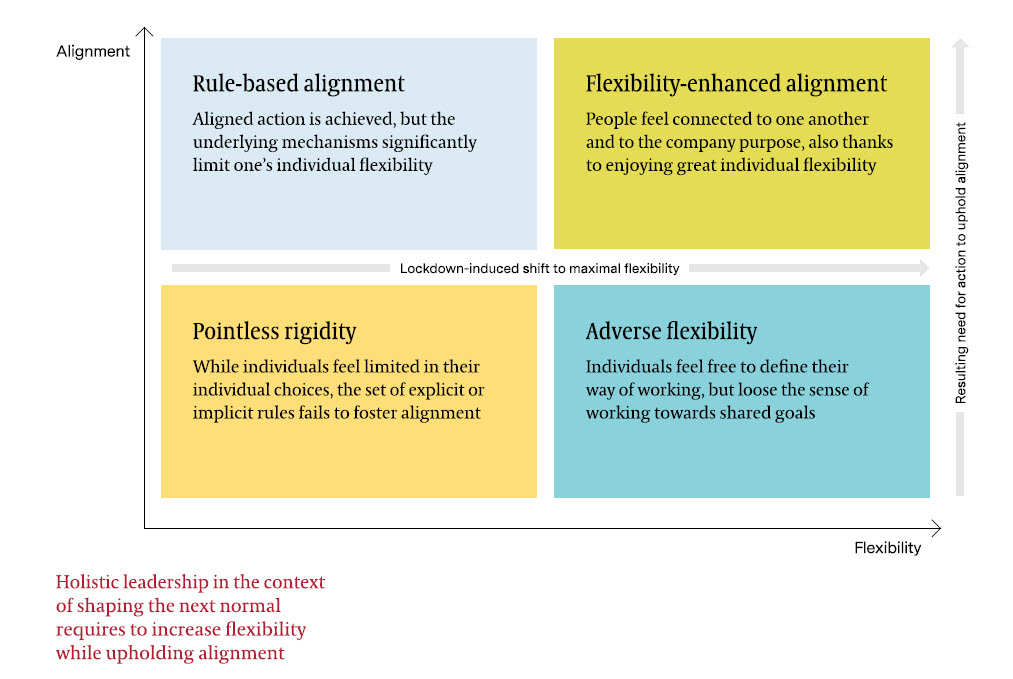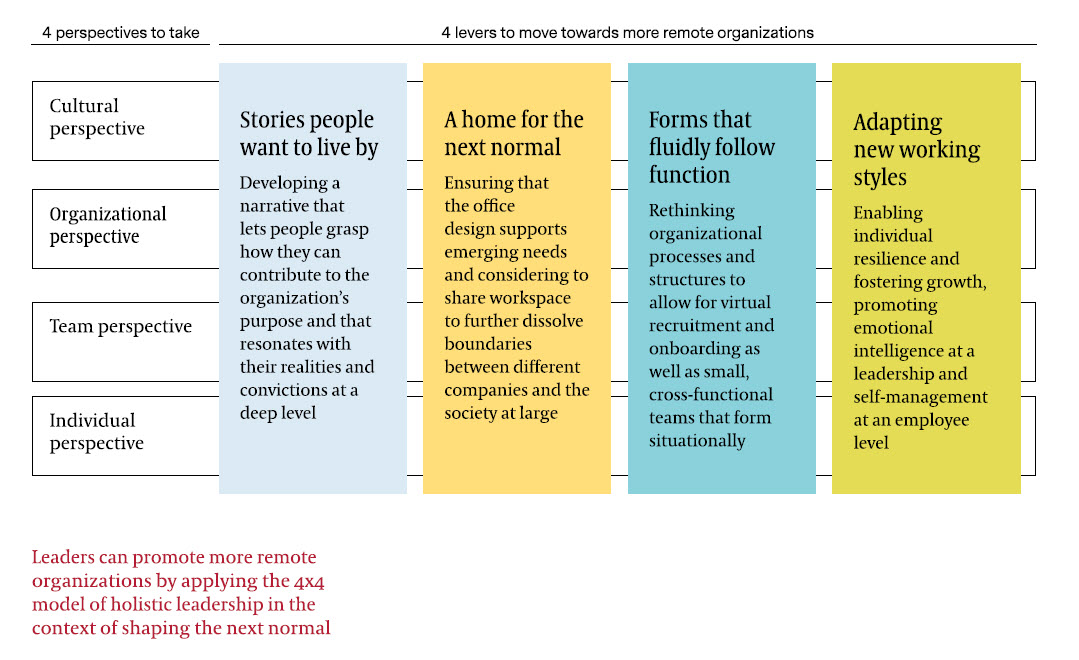Never let a crisis go to waste
COVID-19 started as a health pandemic but has quickly also become a major social and economic crisis. Resilient companies, however, are successfully adapting their business models to the new circumstances while seeking novel ways to take advantage of the altered reality.
It is becoming increasingly evident that remote working is more than a COVID-19 phenomenon or an intellectual or academic thought experiment. Instead, the new working mode has now been proven to suit people’s needs, with many reporting higher satisfaction and reduced stress levels.
Remote settings also offer benefits to employers and society at large, ranging from cost savings thanks to reduced office space to omitted greenhouse emissions thanks to less business travel. Such potential encourages executives to rethink the modus operandi and develop strategies for a faster, more agile, and gradually digitalized future.
There is no such thing as a free lunch
Until recently, it seemed that companies either provided individual flexibility or ensured collective alignment, but rarely both. In fact, leading players have long recognized the perks of offering employees greater working flexibility. This boosts employee well-being, which in turn increases productivity, and also provides companies access to global talent pools and allows them to relieve overcrowded office space.
Yet, some of these same companies turned their backs on the idea of remote working, fearing the absence of crucial water-cooler conversations, social interaction, and a lack of innovation. Furthermore, managers seemed frightened by the idea of losing control of their teams.
Until the lockdown, however, when an overwhelming majority of people and organizations found working from home to be a positive experience. Employees mostly enjoyed the gained flexibility, while employers overcame fears of losing strategic focus and execution power. It follows that greater flexibility and improved strategic alignment are not mutually exclusive, rather, if managed actively, a desired state of flexibility-enhanced alignment.

The whole is more than the sum of its parts
It is one thing to work remotely for a couple of weeks during lockdown, but an entirely different story to move towards working from home ad infinitum. Therefore, a further challenge for leaders lies in addressing future long-term effects of virtual settings.
To find the right balance between flexibility and alignment and to keep employees energized, executives need to assess potential pain points at all organizational levels. Only those executives who respond to individual and team-related needs, as well as organizational and cultural implications of the emergent state are likely to eventually succeed.
The inherent complexity is not meant to drive managers in the direction of pre-COVID methods, but instead motivate them to take a holistic view when tackling the four steps outlined below.
All good things come in fours
Leaders can promote lasting, positive change for their organizations by exploiting the following four levers that pave the way towards more remote organizations.
Stories people want to live
The new normal requires developing a meaningful narrative that helps people grasp what is expected of them, respectively how they can contribute to the business purpose going forward. For people to want to live the story, it needs to resonate with their inner values and deepest convictions. Thus, employers should take time to seek an in-depth understanding of their employees’ current realities, perceptions and emotional states. “Crowd sourcing” can be a powerful tool to bring to light creative ideas from within the organization that help maintain high energy levels and a joint sense of working towards meaningful goals.
A home for the next normal
Secondly, holistically minded leaders should ensure that the organizational infrastructure seamlessly supports the suggested narrative. This is likely to require a fundamental change in the office set-up, creating a “home” for office activities in the next normal. For some companies, this could mean redefining the role of the office to the point where it mainly serves as a venue for creative work and social gatherings, consisting of project and event rooms. For others, shared workspaces with other companies might be the way forward. New office concepts will need less space, while bringing to life beautiful, inspiring, and diverse environments that further dissolve boundaries between different companies and society at large.
Forms that fluidly follow function
Thirdly, companies should take advantage of the current opportunity to rethink and adjust their core processes and organizational structures. Executives will, for instance, need to find virtual ways to select and onboard employees in a world where people rarely physically meet. Moreover, the role of organizational structures in facilitating collaboration is reinforced by the recent circumstances. Smaller, cross-functional teams can help to ensure close collaboration despite virtual settings. At the same time, working from home deemphasizes team boundaries, allowing organizations to introduce more fluid set-ups, in which powerful teams are formed spontaneously based on situational needs.
Adapting new working styles
Lastly, working from home requires executives and employees to adopt new mindsets and skills. Many executives need to fundamentally adjust their style of holding meetings, ensuring clarity and accountability, and applying technology.
Moreover, a key challenge relates to emotional intelligence, as the next normal requires elevated levels of trust and delegation, as well as empathy and care. What could easily be mistaken for business-as-usual in a virtual setting actually requires executives’ willingness to alter long-established habits and routines.
On the employee side, key learning goals include self-management and personal resilience. Not surprisingly, people who effectively manage themselves and successfully deal with adversity are those who enrich organizations the most.

Even the longest journey begins with a single step
The idea of designing a next normal might cause excitement as well as stress in executives. Luckily, there is no need to entirely reinvent the wheel. Working from home has gained momentum over the last decade, with more and more companies offering creative ways to balance employee flexibility and corporate alignment. Executives can therefore seek inspiration from other companies, experimenting with different successful and inspirational approaches, ultimately working out which elements work best for their own firms.
Constructing a future-ready next normal is not a gimmick, but a necessity for leaders. Managers who holistically approach this task and take advantage of COVID-19 related changes to experiment with new work concepts would eventually harness the benefits associated with both, namely working from the office and working from home. Moreover, they are likely to be rewarded with a competitive edge over rivals.
While major changes have already taken place, the situation calls for leaders to actively shape increasingly remote organizations. In doing so, they can refer to the introduced framework and steps. Ultimately, executives will be judged by the way they convert COVID-19 circumstances into work-related improvements. In this regard, executives should not just settle for any next normal, but make use of the opportunity to evolve corporate models and cultures to enhance people’s lives.
With the kind support of Max Reichel.





